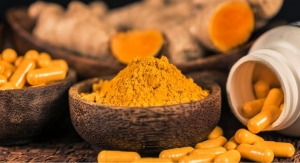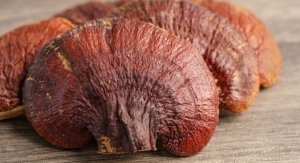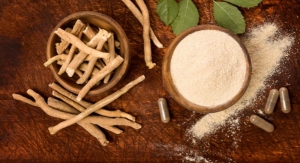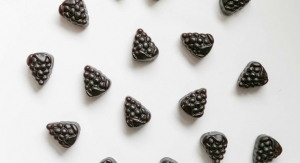Steven Dentali, PhD, American Herbal Products Association06.03.13
In my first column (January/February, “Botanicals—Not Your Simple Chemical Ingredients”), I discussed what’s in a botanical name, pointing out that a single name can refer to herb materials at different stages of processing, with the example of a reference to coffee possibly including the live plant, the dried bean, the drink in a cup or even a “let’s do coffee” event. Last time (April, “Botanical Extracts: Not Single Chemical Ingredients”), I focused on extracts, covering solvents, extract types and herb-to-extract ratios.
I wrote previously that I would explore the connection between the strength, potency and standardization of botanical ingredients, but the identification of botanical ingredients is timely and more important. Federal regulations require companies to be responsible for the identification of each and every dietary ingredient they use in manufacturing a supplement. In order to do this—indeed, in order to know how to do this—manufacturers must know what they are dealing with and which of the characteristics of an ingredient can be used to identify it reliably.
I wrote this piece after helping to conduct the American Herbal Products Association’s second Botanical Congress, which took place May 2 in New York City. This year focused on botanical ingredient identification. This one-day meeting explored regulatory and practical issues and was arranged to provide interactive experiences with providers of reference standards, tools and technologies used in identification of botanical ingredients, as well as exposure to the related regulatory realities presented by able industry lawyers.
Identifying Botanical Ingredients
So what are botanical ingredients, really? Prior to the start of the botanical congress, participants were asked to list their top 10 most popular botanicals so that the workshop presenters could address how to identify those ingredients in their presentations. Examples from some of these lists included the following: ginseng, valerian, yerba mate powder, guaraná, tea polyphenols, dandelion root extract, green tea extract, bitter orange, Withania somnifera, lemon balm, passionflower, yarrow, ashwagandha, burdock root, motherwort and olive and nettle leaves.
The implication is that all of these are ingredients, but none of them come with enough specificity to know how to identify them. These names are just shorthand for a material that has distinctive features that can be used to distinguish them from other similar materials. Our ability to tell one ingredient from another is the critical task. It should be noted that copies of the first two articles in this Botanical Basics series were provided to attendees, because they discuss basic issues that are essential for understanding the field, which includes knowing which questions to ask so that you can properly choose and implement tests of herbal/botanical ingredients to ensure identity.
At least one presenter at the congress noted the question being asked of botanical identity is not “what botanical is this?” Instead, “is this ingredient what it is supposed to be?” In other words, the question of identification is not the task of assigning an identity to an unknown material, but instead to confirm the identity of a known one. It’s not “what is this flower?” but “is this flower the flower it’s supposed to be?”
Organolepsis
For example, to tell if a rose is a rose, you might first check for thorns. If you are attempting to identify an unknown flower, checking for thorns should not be at the top of your list of identity tests.
You don’t need to be a botanist or a chemist to know that a rose is a rose. If you’ve seen one before and noticed what it looked and felt like (remember those thorns), that might be enough experience for you to identify another rose later. Looking, feeling, smelling and tasting are ways we use our senses to analyze flowers and other items in our environment. These basic senses can also serve us quite well in confirming the identity of botanical ingredients so long as enough identifying characteristics are present to be sensed.
A classic term for using sense organs in this fashion is organolepsis, and practical approaches to using it in a botanical industrial setting are described in AHPA’s Organoleptic Analysis of Herbal Ingredients (2013) document. Attendees of the botanical congress workshop were provided a copy as a complement to the hands-on, experiential, two-hour mini course on organolepsis that was part of the congress. Participants were shown how to go about setting up sensory evaluation approaches that have practical uses in an industrial setting. Several samples of dried herbs were distributed and sampled to get a taste (pun intended) of how to identify herbal ingredients reliably.
A whole flowering plant has all the anatomical features usually relied upon to identify it accurately. Leaves, flowers, stems and roots are all intact. Once that plant or plant part is harvested and dried, it may be more difficult to confirm its identity because identifying characteristics present in the whole live plant may no longer be available for inspection. We pick out groceries by sight, and while we may read store signs to learn where a fruit or vegetable is from, or what variety it may be, we are perfectly capable and competent at knowing if we are looking at potatoes versus apples versus lettuce.
Microscopy
Just as it’s not so easy or even possible to identify fruits or vegetables that we have never seen before, the same is true for botanical identification. That’s why training and experience are vital components for someone to be able to employ methods of herbal ingredient identification. Once dried herbs are reduced in size to smaller pieces, or even to a powder, the larger visual features used to identify their previous identity have been obliterated. But all may not be lost, because characteristic microscopic anatomical cellular structures may be present and can be observed under a microscope. Employing microscopy to identify botanical powders is not a skill learned overnight, but it can be a very powerful one for confirming the identity of botanical powders and, to some degree, as a check for adulterants.
Other Identification Methods
A microscope lets one see remaining physical structures. When those features are no longer present, as with extracts, other tools are needed to “see” the invisible chemical properties of the material. This is not the time or place to explain two chromatographic techniques commonly employed in botanical analysis, although you have probably heard of HPLC (high-performance liquid chromatography) and HPTLC (high-performance thin-layer chromatography). Simply put, they separate groups of chemicals from a solution and generate a more or less characteristic visual pattern. HPLC gives a readout of peaks and valleys that represent various chemical compounds. HPTLC produces a plate with a series of bands that are generally composed of groups of chemicals.
Chromatography’s view into the chemical composition of an herbal extract can be enhanced by coupling the separation results with detectors that offer information about the structures of the separated chemicals. This generates information to help identify and quantify specific constituents. While not a necessary part of all identity tests, this type of measurement becomes crucial when substantiating label claims of x or y percent of herbal constituents. Included among such detectors are spectroscopic ones, which are instruments that disperse parts of the electromagnetic spectrum beyond the part that our eyes register, that of visible light.
UV (ultraviolet), the various types of infrared (IR)—including NIR (Near IR) and NMR (Nuclear Magnetic Resonance, which you may recognize as MRI or Magnetic Resonance Imaging) spectroscopy—provide feedback about the molecular structure of atoms in an extract. NMR is a particularly powerful tool in this regard and recently has made strong advances in its ability to quantify individual constituents. NIR produces a pattern, but unlike the others, the information in the pattern can’t be deciphered by the naked eye. It can’t even be interpreted to identify structures; it can only produce a pattern that computer software can rate as to its similarity to other patterns. With the right library of material, however, it can be a useful tool for discrimination among patterns.
In fact, computer software manipulation of chemical data, known as chemometrics, can be applied to any set of data to determine if the data generated from a new sample closely match previous data sets. This is dependent on the instruments to do all the discriminating, so it’s critical to know that the equipment is properly trained. It’s a far cry from our appreciation that a rose is indeed a rose when you need an instrument to tell you if it is or not. Remember though, a rose extract should still smell like it came from a rose, meaning that no matter how many instrument tests you perform, if a material meets spec but doesn’t look or smell right, maybe it’s not right.
Which Tests are the Right Ones?
How many tests do you have to conduct to know you have adequately identified an herbal ingredient? As many as it takes. And they must be appropriate for their intended use. When done correctly, organoleptic analysis of whole plant parts can be perfectly adequate to identify a myriad of herbal ingredients. DNA analysis can also be a useful tool for identity confirmation and to screen for known adulterating plants, especially if you have plant powders that are easily adulterated or when different plant species are substituted for the target ones.
Participants of AHPA’s Botanical Congress were afforded the opportunity to meet with providers of botanical reference materials (their utility should not be overlooked), equipment manufacturers and service providers, who engaged in targeted educational discussions that oriented attendees to better understand how particular technologies are best employed to solve the issues of herbal ingredient identification. As mentioned earlier, regulatory sessions were also held at the congress because understanding the need for proper herbal ID, and what can happen when a company doesn’t properly implement this requirement, are found in the regulations and in their enforcement.
_____________________________________________________________________________________________________________
Steven Dentali, PhD, chief science officer of the American Herbal Products Association (AHPA), Silver Spring, MD, studied herbal medicine in the Pacific Northwest, finding a disconnect between the herbal and academic communities. He subsequently earned his doctorate in Pharmaceutical Sciences with a specialization in Natural Products Chemistry from the University of Arizona, Tucson. An American Foundation for Pharmaceutical Education Fellow, Dr. Dentali is recognized as a foremost expert in the natural products industry. He is a member of the United States Pharmacopoeia 2010-2015 Convention, Editorial Board Chair of AOAC International, and is an advisory board member of the American Botanical Council and the American Herbal Pharmacopeia. A frequent lecturer, he also serves as a reviewer for the National Center for Complementary and Alternative Medicine at NIH. He can be reached at sdentali@ahpa.org; Website: www.ahpa.org.
I wrote previously that I would explore the connection between the strength, potency and standardization of botanical ingredients, but the identification of botanical ingredients is timely and more important. Federal regulations require companies to be responsible for the identification of each and every dietary ingredient they use in manufacturing a supplement. In order to do this—indeed, in order to know how to do this—manufacturers must know what they are dealing with and which of the characteristics of an ingredient can be used to identify it reliably.
I wrote this piece after helping to conduct the American Herbal Products Association’s second Botanical Congress, which took place May 2 in New York City. This year focused on botanical ingredient identification. This one-day meeting explored regulatory and practical issues and was arranged to provide interactive experiences with providers of reference standards, tools and technologies used in identification of botanical ingredients, as well as exposure to the related regulatory realities presented by able industry lawyers.
Identifying Botanical Ingredients
So what are botanical ingredients, really? Prior to the start of the botanical congress, participants were asked to list their top 10 most popular botanicals so that the workshop presenters could address how to identify those ingredients in their presentations. Examples from some of these lists included the following: ginseng, valerian, yerba mate powder, guaraná, tea polyphenols, dandelion root extract, green tea extract, bitter orange, Withania somnifera, lemon balm, passionflower, yarrow, ashwagandha, burdock root, motherwort and olive and nettle leaves.
The implication is that all of these are ingredients, but none of them come with enough specificity to know how to identify them. These names are just shorthand for a material that has distinctive features that can be used to distinguish them from other similar materials. Our ability to tell one ingredient from another is the critical task. It should be noted that copies of the first two articles in this Botanical Basics series were provided to attendees, because they discuss basic issues that are essential for understanding the field, which includes knowing which questions to ask so that you can properly choose and implement tests of herbal/botanical ingredients to ensure identity.
At least one presenter at the congress noted the question being asked of botanical identity is not “what botanical is this?” Instead, “is this ingredient what it is supposed to be?” In other words, the question of identification is not the task of assigning an identity to an unknown material, but instead to confirm the identity of a known one. It’s not “what is this flower?” but “is this flower the flower it’s supposed to be?”
Organolepsis
For example, to tell if a rose is a rose, you might first check for thorns. If you are attempting to identify an unknown flower, checking for thorns should not be at the top of your list of identity tests.
You don’t need to be a botanist or a chemist to know that a rose is a rose. If you’ve seen one before and noticed what it looked and felt like (remember those thorns), that might be enough experience for you to identify another rose later. Looking, feeling, smelling and tasting are ways we use our senses to analyze flowers and other items in our environment. These basic senses can also serve us quite well in confirming the identity of botanical ingredients so long as enough identifying characteristics are present to be sensed.
A classic term for using sense organs in this fashion is organolepsis, and practical approaches to using it in a botanical industrial setting are described in AHPA’s Organoleptic Analysis of Herbal Ingredients (2013) document. Attendees of the botanical congress workshop were provided a copy as a complement to the hands-on, experiential, two-hour mini course on organolepsis that was part of the congress. Participants were shown how to go about setting up sensory evaluation approaches that have practical uses in an industrial setting. Several samples of dried herbs were distributed and sampled to get a taste (pun intended) of how to identify herbal ingredients reliably.
A whole flowering plant has all the anatomical features usually relied upon to identify it accurately. Leaves, flowers, stems and roots are all intact. Once that plant or plant part is harvested and dried, it may be more difficult to confirm its identity because identifying characteristics present in the whole live plant may no longer be available for inspection. We pick out groceries by sight, and while we may read store signs to learn where a fruit or vegetable is from, or what variety it may be, we are perfectly capable and competent at knowing if we are looking at potatoes versus apples versus lettuce.
Microscopy
Just as it’s not so easy or even possible to identify fruits or vegetables that we have never seen before, the same is true for botanical identification. That’s why training and experience are vital components for someone to be able to employ methods of herbal ingredient identification. Once dried herbs are reduced in size to smaller pieces, or even to a powder, the larger visual features used to identify their previous identity have been obliterated. But all may not be lost, because characteristic microscopic anatomical cellular structures may be present and can be observed under a microscope. Employing microscopy to identify botanical powders is not a skill learned overnight, but it can be a very powerful one for confirming the identity of botanical powders and, to some degree, as a check for adulterants.
Other Identification Methods
A microscope lets one see remaining physical structures. When those features are no longer present, as with extracts, other tools are needed to “see” the invisible chemical properties of the material. This is not the time or place to explain two chromatographic techniques commonly employed in botanical analysis, although you have probably heard of HPLC (high-performance liquid chromatography) and HPTLC (high-performance thin-layer chromatography). Simply put, they separate groups of chemicals from a solution and generate a more or less characteristic visual pattern. HPLC gives a readout of peaks and valleys that represent various chemical compounds. HPTLC produces a plate with a series of bands that are generally composed of groups of chemicals.
Chromatography’s view into the chemical composition of an herbal extract can be enhanced by coupling the separation results with detectors that offer information about the structures of the separated chemicals. This generates information to help identify and quantify specific constituents. While not a necessary part of all identity tests, this type of measurement becomes crucial when substantiating label claims of x or y percent of herbal constituents. Included among such detectors are spectroscopic ones, which are instruments that disperse parts of the electromagnetic spectrum beyond the part that our eyes register, that of visible light.
UV (ultraviolet), the various types of infrared (IR)—including NIR (Near IR) and NMR (Nuclear Magnetic Resonance, which you may recognize as MRI or Magnetic Resonance Imaging) spectroscopy—provide feedback about the molecular structure of atoms in an extract. NMR is a particularly powerful tool in this regard and recently has made strong advances in its ability to quantify individual constituents. NIR produces a pattern, but unlike the others, the information in the pattern can’t be deciphered by the naked eye. It can’t even be interpreted to identify structures; it can only produce a pattern that computer software can rate as to its similarity to other patterns. With the right library of material, however, it can be a useful tool for discrimination among patterns.
In fact, computer software manipulation of chemical data, known as chemometrics, can be applied to any set of data to determine if the data generated from a new sample closely match previous data sets. This is dependent on the instruments to do all the discriminating, so it’s critical to know that the equipment is properly trained. It’s a far cry from our appreciation that a rose is indeed a rose when you need an instrument to tell you if it is or not. Remember though, a rose extract should still smell like it came from a rose, meaning that no matter how many instrument tests you perform, if a material meets spec but doesn’t look or smell right, maybe it’s not right.
Which Tests are the Right Ones?
How many tests do you have to conduct to know you have adequately identified an herbal ingredient? As many as it takes. And they must be appropriate for their intended use. When done correctly, organoleptic analysis of whole plant parts can be perfectly adequate to identify a myriad of herbal ingredients. DNA analysis can also be a useful tool for identity confirmation and to screen for known adulterating plants, especially if you have plant powders that are easily adulterated or when different plant species are substituted for the target ones.
Participants of AHPA’s Botanical Congress were afforded the opportunity to meet with providers of botanical reference materials (their utility should not be overlooked), equipment manufacturers and service providers, who engaged in targeted educational discussions that oriented attendees to better understand how particular technologies are best employed to solve the issues of herbal ingredient identification. As mentioned earlier, regulatory sessions were also held at the congress because understanding the need for proper herbal ID, and what can happen when a company doesn’t properly implement this requirement, are found in the regulations and in their enforcement.
_____________________________________________________________________________________________________________
Steven Dentali, PhD, chief science officer of the American Herbal Products Association (AHPA), Silver Spring, MD, studied herbal medicine in the Pacific Northwest, finding a disconnect between the herbal and academic communities. He subsequently earned his doctorate in Pharmaceutical Sciences with a specialization in Natural Products Chemistry from the University of Arizona, Tucson. An American Foundation for Pharmaceutical Education Fellow, Dr. Dentali is recognized as a foremost expert in the natural products industry. He is a member of the United States Pharmacopoeia 2010-2015 Convention, Editorial Board Chair of AOAC International, and is an advisory board member of the American Botanical Council and the American Herbal Pharmacopeia. A frequent lecturer, he also serves as a reviewer for the National Center for Complementary and Alternative Medicine at NIH. He can be reached at sdentali@ahpa.org; Website: www.ahpa.org.



























